Eco-Friendly Home Decor: 10 Sustainable Pieces to Transform Your Space
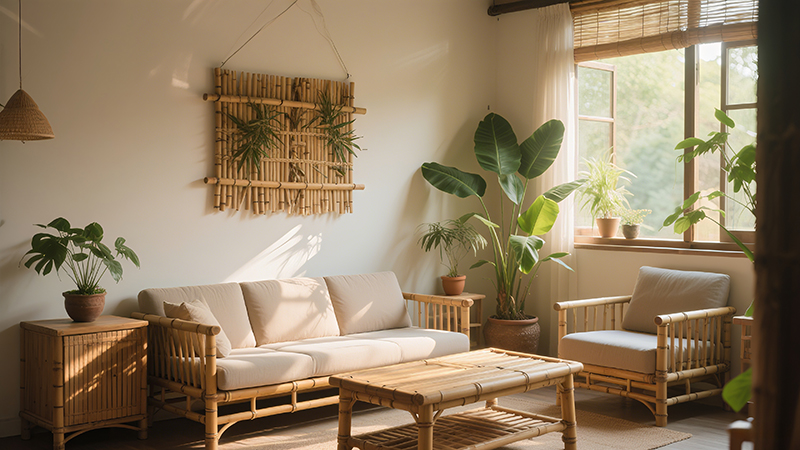
Contents
- Introduction
- 1. Bamboo Furniture: Fast-Growing, Stylish, and Forest-Friendly
- 2. Recycled Glassware: Turn Waste into Works of Art
- 3. Organic Cotton Textiles: Soft, Safe, and Gentle on the Planet
- 4. Reclaimed Wood Accents: History Meets Sustainability
- 5. Cork Flooring: The Unsung Hero of Eco-Friendly Homes
- 6. Hemp Rugs: Durable, Stylish, and Earth-Friendly
- 7. Upcycled Lighting: Creativity Meets Conservation
- 8. Clay Pottery: Timeless, Natural, and Biodegradable
- 9. Linen Upholstery: The Epitome of Sustainable Luxury
- 10. Natural Fibre Wall Art: Add Texture Without the Footprint
- Conclusion
Introduction
In recent years, sustainable living has evolved from a passing trend into a meaningful lifestyle embraced by millions worldwide. As homeowners grow more conscious of their environmental impact, the demand for eco-friendly home decor has surged dramatically. The best part? Choosing sustainability doesn’t mean compromising on style. In fact, eco-friendly decor often infuses spaces with unique character, artisanal flair, and a sense of purpose that mass-produced items simply can’t replicate.
Today’s consumers aren’t just drawn to a product’s appearance—they care deeply about its backstory, from where materials are sourced to the carbon footprint of its production. Whether you’re decorating a compact city apartment, a suburban family home, or a coastal getaway, eco-friendly decor lets you craft a space that mirrors your values while looking absolutely stunning.
In this guide, we’ll explore 10 trending eco-friendly home decor pieces that are making waves globally. From rapidly renewable bamboo furniture to upcycled lighting with a story to tell, each item is designed to minimize environmental harm while enhancing your home’s beauty. We’ll break down their benefits, share styling advice, and explain why they’re a smart pick for both your living space and the planet. Let’s begin.
1. Bamboo Furniture: Fast-Growing, Stylish, and Forest-Friendly
When it comes to sustainable furniture, bamboo is in a league of its own. Unlike hardwood trees, which can take 20–100 years to mature, bamboo is a grass that reaches full growth in just 3–5 years. This rapid renewal makes it one of the most sustainable resources on Earth—ideal for homeowners who want to furnish responsibly.
But bamboo isn’t just eco-conscious; it’s also incredibly durable. Its tensile strength rivals that of steel, making it perfect for everyday use. In homes with open layouts and multifunctional spaces, bamboo furniture’s lightweight yet sturdy design really shines.
Popular Bamboo Pieces for Every Room
| Room | Bamboo Furniture Ideas | Why It Works for Modern Homes |
| Living Room | Coffee tables, bookshelves | Complements minimalist and contemporary styles |
| Dining Room | Dining tables, chairs | Resists scratches (great for families) |
| Bedroom | Bed frames, dressers | Free from toxic formaldehyde glues |
Key Tips for Shoppers
- Look for FSC Certification: The Forest Stewardship Council (FSC) label guarantees responsible sourcing, ensuring minimal impact on ecosystems.
- Choose Natural Finishes: Water-based sealants or beeswax coatings keep bamboo furniture free from harsh chemicals, making it safer for homes with kids and pets.
- Style Flexibility: Pair bamboo with neutral textiles like linen or organic cotton for a coastal feel, or mix with metal accents for an industrial edge—it’s versatile enough for any design style.
2. Recycled Glassware: Turn Waste into Works of Art
In homes where sustainability and uniqueness go hand in hand, recycled glassware has become a must-have. Every ton of recycled glass saves over 1,300 pounds of sand, 410 pounds of soda ash, and 380 pounds of limestone—making it a true champion of resource conservation.
Why Recycled Glassware Stands Out
Recycled glass isn’t just good for the planet—it’s also stunningly beautiful. Melting down old bottles, jars, and windows creates one-of-a-kind pieces with subtle color variations and textures you’ll never find in mass-produced glass. These small imperfections add character, turning ordinary items into conversation starters.
Must-Have Recycled Glass Pieces
- Drinking Glasses: Great for daily use or entertaining. Many brands add unique details like hand-blown ridges or vintage shapes, making them perfect for sharing on social media and enhancing any kitchen.
- Vases: A recycled glass vase filled with dried wildflowers brings rustic charm to kitchens and living rooms—ideal for farmhouse or bohemian-style homes.
- Lighting: Recycled glass pendant lights or table lamps cast a warm, soft glow. Stained glass versions made from recycled materials are especially popular in eclectic and bohemian spaces.
Practical Benefits for Modern Lifestyles
- Durability: Recycled glass is thicker than new glass, so it’s less likely to chip—perfect for homes with kids or pets.
- Energy Savings: Producing recycled glass uses 30% less energy than making new glass, reducing your home’s carbon footprint—a top priority for eco-conscious buyers.
- Easy Maintenance: Most options are dishwasher-safe, fitting seamlessly into busy schedules.
3. Organic Cotton Textiles: Soft, Safe, and Gentle on the Planet
Conventional cotton is one of the most pesticide-heavy crops globally, using 24% of all insecticides despite covering just 2.4% of farmland. For consumers who prioritize health and sustainability, organic cotton textiles are the obvious choice.
Why Organic Cotton Stands Out
- Water Efficiency: According to the Soil Association, organic cotton uses 91% less water than conventional cotton—critical as water scarcity becomes a growing concern worldwide.
- No Harmful Chemicals: Free from pesticides, herbicides, and synthetic dyes, organic cotton is hypoallergenic—ideal for baby nurseries or anyone with sensitive skin.
Best Uses in Homes
- Bed Linens: Organic cotton sheets get softer with each wash, and their breathability keeps you cool during hot summers or humid nights.
- Curtains: Heavy organic cotton curtains block light and insulate rooms, cutting down on heating and cooling costs—perfect for eco-focused households.
- Throw Blankets: Chunky-knit organic cotton blankets add texture to sofas and beds, and they double as cozy picnic blankets for outdoor adventures.
Certification Matters
Look for the Global Organic Textile Standard (GOTS) label, which ensures organic integrity from farm to finished product. This internationally recognized certification gives buyers peace of mind.
4. Reclaimed Wood Accents: History Meets Sustainability
Reclaimed wood is a favorite in interior design for a reason—each piece has a story to tell. Sourced from old barns, factories, or railway ties, reclaimed wood adds warmth and history to modern homes, bridging the gap between past and present.
Why It’s a Win for the Planet
Using reclaimed wood saves trees and reduces landfill waste. For every ton of reclaimed wood used, around 500 pounds of carbon emissions are avoided—making it a powerful choice for climate-conscious shoppers.
Stylish Ways to Use Reclaimed Wood
- Wall Panels: Shiplap or barn wood walls bring rustic charm to living rooms and bedrooms, popular in cottage-style homes and rural retreats.
- Coffee Tables: A reclaimed oak coffee table with visible knots and nail holes becomes a focal point in minimalist spaces—trendy in urban lofts and suburban homes alike.
- Floating Shelves: Reclaimed pine shelves in kitchens hold plants or cookbooks, blending functionality with eco-appeal.
Tips for Buyers
- Check for Treatments: Make sure reclaimed wood is free from lead paint or toxic preservatives, especially important in homes with children.
- Embrace Imperfections: Cracks, dents, and weathered spots are part of the charm—they tell the wood’s unique history.
- Pair with Greenery: Reclaimed wood looks amazing alongside potted herbs or snake plants, creating an “indoor garden” vibe that enhances any room.
5. Cork Flooring: The Unsung Hero of Eco-Friendly Homes
Cork flooring is gaining momentum in sustainable home design, and for good reason. Harvested from the bark of cork oak trees (which regrows every 9 years), it’s one of the most renewable flooring options available, with minimal environmental impact.
Benefits for Modern Lifestyles
- Comfort: Cork’s natural elasticity makes it softer underfoot than hardwood or tile—great for kitchens where you stand for hours or kids’ playrooms.
- Soundproofing: Its cellular structure absorbs noise, a lifesaver in apartments or multi-story homes where privacy matters.
- Hypoallergenic: Cork resists mold, mildew, and dust mites, making it perfect for allergy sufferers or anyone wanting a healthier living environment.
Styling Cork Flooring
- Color Options: Natural cork (light beige) pairs beautifully with Scandinavian decor, while stained cork (dark brown or gray) fits industrial or mid-century modern styles.
- Room Versatility: Use it in bathrooms (with proper sealing) or bedrooms—its warmth contrasts nicely with cool-toned walls, a trend in both urban and rural homes.
Maintenance Made Easy
Sweep regularly and clean with mild soap and water—no harsh chemicals needed. With proper care, cork flooring lasts 20–30 years, making it a cost-effective choice for long-term homeowners.
6. Hemp Rugs: Durable, Stylish, and Earth-Friendly
Hemp is making a name for itself in sustainable living—and for good reason. This tough plant grows without pesticides, needs little water, and even improves soil health as it grows. When woven into rugs, hemp becomes a durable, stylish addition to any home.
Why Hemp Rugs Work for Modern Homes
- Durability: Hemp fibers are 3x stronger than cotton, standing up to high-traffic areas like entryways and living rooms—ideal for busy families and pet owners.
- Style Variety: From braided hemp rugs (perfect for farmhouse kitchens) to flatweave geometric designs (trendy in modern lofts), there’s a hemp rug for every style.
- Eco-Cred: Hemp rugs are biodegradable at the end of their life, avoiding the plastic waste of synthetic rugs—a big plus for zero-waste enthusiasts.
Care Tips
Hemp rugs get softer with each wash. Spot clean with mild detergent, or hang them outside to air out—easy maintenance that fits into busy schedules.
7. Upcycled Lighting: Creativity Meets Conservation
Upcycled lighting is more than just decor—it’s a statement. In communities where DIY culture and sustainability intersect, homeowners and designers are turning everyday waste into stunning light fixtures, showing that creativity can drive environmental change.
Popular Upcycled Lighting Ideas
- Industrial Pendant Lights: Old steel pipes, recycled from construction sites, are transformed into sleek pendant lights—popular in loft apartments and urban homes.
- Mason Jar Chandeliers: These charming chandeliers use vintage mason jars to hold LED bulbs, casting a warm glow over dining tables—perfect for rural and cottage-style homes.
- Wine Bottle Lamps: Empty wine bottles are cut and fitted with sockets, becoming colorful bedroom lamps that add personality to any space.
Why Shoppers Love It
- Uniqueness: No two upcycled lights are the same, appealing to those who want one-of-a-kind decor that reflects their personality.
- Affordability: Many upcycled pieces are budget-friendly, making sustainable decor accessible to renters and cost-conscious buyers.
- DIY Potential: For crafty folks, upcycling old items into lights is a fun weekend project—adding a personal touch to your space while reducing waste.
8. Clay Pottery: Timeless, Natural, and Biodegradable
Clay pottery has been used in homes for thousands of years, and today, it’s making a comeback in eco-friendly spaces. Handmade by artisans worldwide, clay pieces bring earthy elegance to modern interiors, connecting homes to traditional craftsmanship.
Benefits of Clay Pottery
- Natural Materials: Clay is 100% biodegradable and free from plastics or harmful chemicals, aligning with zero-waste goals.
- Breathability: Clay planters allow air and moisture to pass through, preventing overwatering—ideal for new and experienced plant parents alike.
- Artisanal Charm: Hand-thrown clay bowls or vases have subtle imperfections that add character, a nice change from mass-produced ceramics.
Versatile Uses
- Planters: Small clay pots for succulents on windowsills, large floor pots for fiddle-leaf figs in living rooms.
- Dinnerware: Hand-painted clay plates and bowls elevate meal times, perfect for those who enjoy slow, intentional dining.
- Candle Holders: Clay candle holders diffuse light softly, creating a cozy atmosphere for winter evenings or quiet nights in.
9. Linen Upholstery: The Epitome of Sustainable Luxury
Linen has long been a staple in fashion and home decor, and its popularity in eco-friendly spaces is growing. Made from flax plants, linen uses 50% less water than cotton and no pesticides, making it a sustainable standout.
Why Linen Upholstery Shines
- Year-Round Comfort: Linen keeps you cool in summer and warm in winter, making it perfect for sofas and chairs in all climates.
- Durability: With proper care, linen upholstery lasts 10–15 years, outliving synthetic fabrics—saving money and reducing waste in the long run.
- Timeless Style: Wrinkled linen gives furniture a relaxed, lived-in look that pairs well with both modern and vintage decor, adding effortless elegance to any room.
Care for Linen Upholstery
Vacuum regularly to remove dust.
Blot spills immediately with a damp cloth—linen is naturally stain-resistant if treated quickly.
Embrace the wrinkles: They’re part of linen’s charm, so skip the ironing and enjoy the laid-back vibe.
10. Natural Fibre Wall Art: Add Texture Without the Footprint
Wall art is a key part of home decor, and natural fibre pieces are leading the eco-friendly charge. From woven tapestries to pressed botanical prints, these artworks add texture and warmth while keeping sustainability in mind.
Top Natural Fibre Wall Art Trends
- Jute Wall Hangings: Macramé or braided jute pieces bring bohemian vibes to bedrooms and living rooms, popular in creative spaces and eclectic homes.
- Seed Paper Prints: These unique artworks are printed on paper embedded with wildflower seeds—when you’re ready for a change, plant the paper and watch it grow! A hit with families and nature lovers.
- Driftwood Sculptures: Collected from beaches, driftwood is arranged into abstract sculptures or mirrors, adding a coastal touch to any room.
Why It’s Perfect for Modern Homes
- Lightweight: Easy to hang, even in rental apartments where permanent fixtures aren’t allowed.
- Sustainable Sourcing: Jute, sisal, and driftwood are renewable or recycled, aligning with environmental values.
- Mood Booster: Natural textures have been shown to reduce stress—ideal for busy urban dwellers looking to create a calming home environment.
Conclusion
Eco-friendly home decor isn’t just a trend—it’s a movement. As more homeowners prioritize sustainability without giving up style, these 10 pieces offer a perfect starting point. From bamboo furniture that grows faster than you can furnish your home to upcycled lighting that turns waste into wonder, each item proves that green living can be beautiful, functional, and uniquely yours.
For shoppers, the key is to start small. Swap one plastic vase for a recycled glass one, or add a hemp rug to your living room. Over time, these choices add up—benefiting your home, your health, and the planet.
Ready to transform your space? Explore these 10 eco-friendly decor pieces and discover how easy (and stylish) sustainable living can be. Your home—and the earth—will thank you.


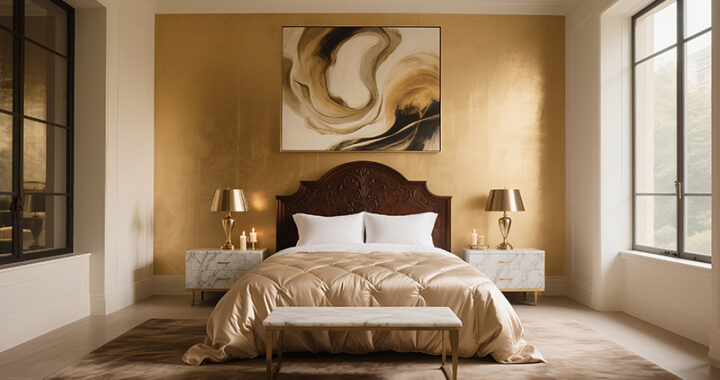 Home Decor Ideas to Make Your Home Feel Like a Luxury Hotel
Home Decor Ideas to Make Your Home Feel Like a Luxury Hotel 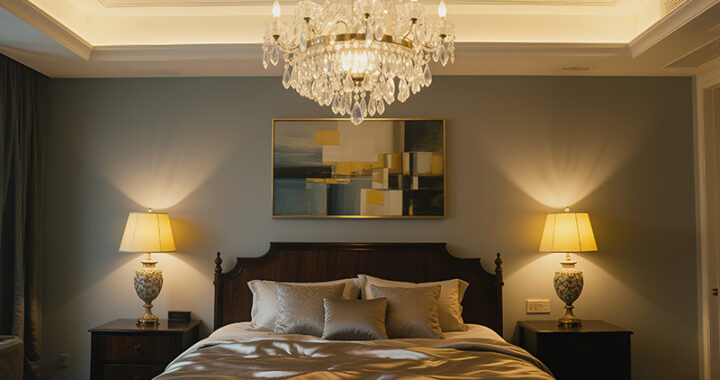 Best Luxury Accent Lighting for Every Room
Best Luxury Accent Lighting for Every Room 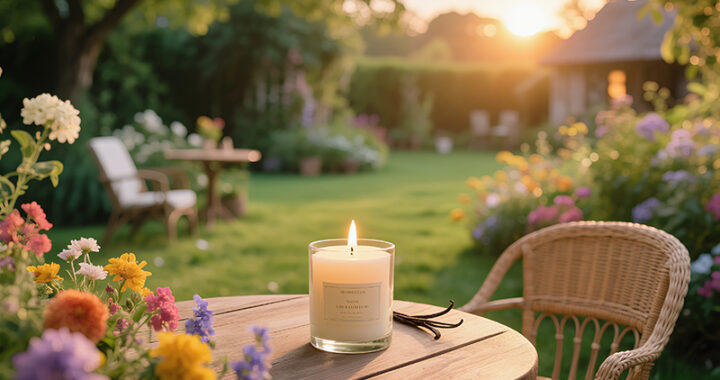 Best Luxury Candles for a Cozy and Elegant Home
Best Luxury Candles for a Cozy and Elegant Home 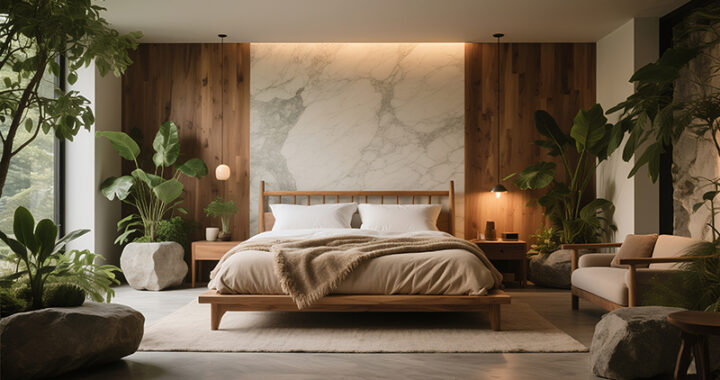 Best Luxury Bed Frames for a Stylish Bedroom
Best Luxury Bed Frames for a Stylish Bedroom 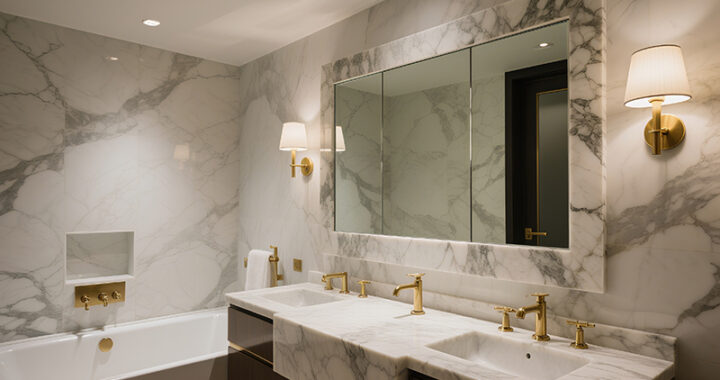 Best Luxury Bathroom Mirrors for a Stylish Touch
Best Luxury Bathroom Mirrors for a Stylish Touch 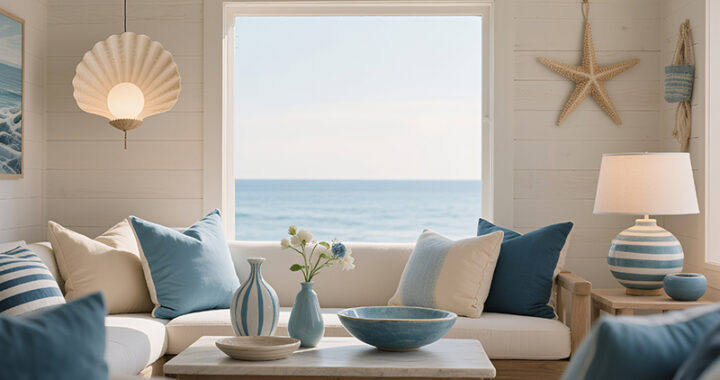 Luxury Coastal Home Decor Ideas: Elevate Your Beach House with Timeless Elegance
Luxury Coastal Home Decor Ideas: Elevate Your Beach House with Timeless Elegance